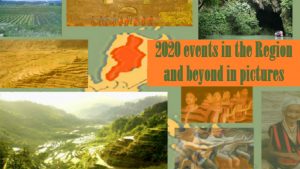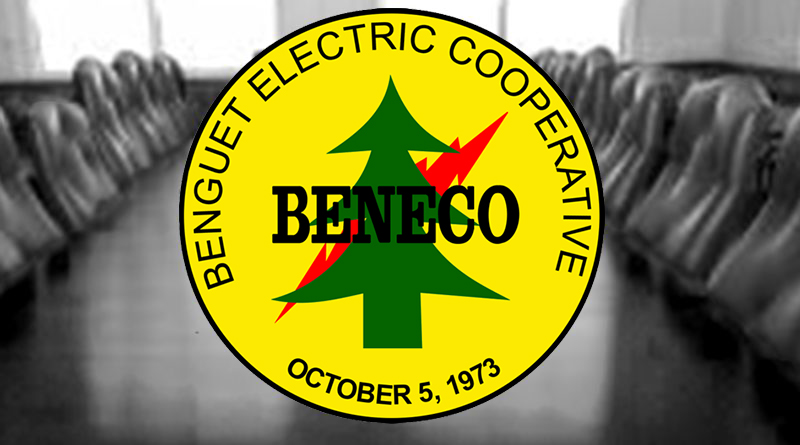Tublay, Benguet- “And the wild sunflowers, in Benguet Province’s summer beauty, stand, that anyone frustrated by this Covid thing, need not look directly at the sun for comfort, but instead see life like sunflowers in a field of numerous suns. . .”
Such depiction encapsulates in a nutshell the thoughts of Benjamin Behis, 57, from La Trinidad, Benguet, in an interview Friday of last week by Herald Express of his experience when he parked Thursday of same week his “aglatlati nga kariton ko” (rusty vehicle) as he described it, along a shoulder of the winding road leading to Kapangan municipality.
Rusty yet sturdy, creaking yet dependable and capable of hauling tons of vegetables, the truck of Behis shuddered to a stop. He alighted, flexed his tired shoulders and stood a lonely sight that Thursday at the Tublay-Kapangan Road edge.
Kilometers apart from people, Behis pulled his face mask downward to his mouth, cringed his nose and took deep breaths of air, like intoxicating liquor coursing into his tired body.
Call of nature too much to ignore, Behis sidled behind a bush and safe from prying eyes, he unzipped and relieved his filled up and complaining bladder.
Behis is a farmer who said he tills a parcel of land somewhere between Tublay-Kapangan boundary, simply calls the land he tills, “diay sangka-bassit nga pagmulmula-ak, (my little garden)” by modestly asserting he rents it from a landowner.
Asked for the name of the land owner for future reference, Behis grinned sheepishly like a kid discovered with his hand in a jar filled with candies, and answered, “Uray siakon tu ti reperence yu, apoh.” That’s how humble Behis is.
Squatting by the road, Behis swept his gaze across the mountains that tied Tublay and Kapangan together. Farming in his blood, he easily discerned the vegetable plots strung along mountain sides like jig jawed lines of a crossword puzzle.
He wondered if the tillers of those plots felt the pinch of the sickness torturing the land and people, like he did. For like him and others, wondering when they can recoup from production loss as a result of quarantine is tied, like an umbilical cord, to the welfare of their families.
See other columns





Yet, despite losses of Benguet farmers, they have shared to other Filipinos the joy of what they have grown, spread a little joy and still doubled their own joy during the past months of crunching times.
And Behis, despite his production loss, comforted himself, with his long ingrained belief of what he described, “Sometimes happiness isn’t about getting what you want all the time; it’s about loving what you have, sharing it, and being grateful for it.”
And more grateful he was, Behis stressed, of the delightful sensation of waking up every day breathing the refreshing fragrance of the morning air and seeing the glorious beams of the rising sun which, from an altar of purpose, are scenes of beauty seen by the eyes of a down-to-earth farmer.
By his lonesome and stringing his gaze far into the Tublay-Kapangan road, Behis’s sight was arrested by an unremarkable clump of plants by the roadside. For long he stared at the plants.
Then mysteriously, Behis gravely raised his palm in a gesture of silent salute to the clump of unremarkable and weed-looking plants.
For the unremarkable plants Behis gestured with good will are nothing more than the wild sunflowers everybody in Cordillera highlands know and see daily along roadsides and hills – many branding it a mere weed, useless, a nuisance, irrelevant and wanting to exterminate it with a vengeance. People refer to it as “marapait.”
But not to Behis and others who know the value of the plant. And that’s when in the middle of the interview, he went on to describe, “And the wild sunflowers, in Benguet province’ summer beauty stand, that anyone frustrated in this Covid thing. . .”
Behis, degree holder of B.S. in Animal Husbandry but instead became an agriculture professional, said of the many reasons he became a successful planter was his consistent utilization of marapait and other organic matter that made the soil where he tills, vigorous and rich.
He raises upland rice variety as well as various kinds of highland vegetables, all easily snapped up by buyers at Agri-Pinoy Trading Center in La Trinidad or at Baguio vegetable market section.
To prove his point, Behis cited a study conducted by the Department of Agriculture (DA) with Philippine Rice Research Institute that established use of wild sunflower as foundational fertilizer benefits growers considerably, the benefits extending even in an extended planting course.
Herald Express crosschecked his claim and sure enough, the DA-Philrice study conducted by experts Evelyn Javier, Jesusa Marquez, Filomena Grospe, Henry Mamucod and Rodante Tabien at Munoz, Nueva Ecija showed “yield of rice fertilized with 0.54 tons/hectare of fresh sunflower leaves was compatible with the yield of crops fertilized with azolla and 40-60 kilograms of commercial NPK (nitrogen) and azolla/hectare.”
DA-Philrice experts proved for three years study wild sunflower leaves have high nitrogen content at 2.9 per cent (dry weight) and fresh sunflower leaves equivalent to 60 N kg. /hectare.
Titled, “Three Year Effect of Organic Fertilizer Use on Paddy Rice,” the DA-Philrice study said, “In the long run, wild sunflowers supply a good amount of nitrogen,” meaning to plant needs, aside from its rotting matter an excellent source of fertilizer.
And DA-Philrice emphasized wild sunflowers also help control aphid infestation and earthworm in rice paddies. The study was conducted by the government-owned Nueva Viscaya State University.
Conversely, the study pointed out the long-held practice of highland people using wild sunflower as fertilizer, thus strengthening basis of the highland people’s use of it.
Wild sunflowers are gathered by indigenous farmers, placed into rice paddies during plowing to hasten decomposition. This practice promotes rapid growth in terms of height and tiller number, stimulating root development and promotes early flowering and ripening especially in cold places, the DA-Phil rice found out.
And those observations are exactly what Behis gets whenever he needs his plants to flower early or mature to send these for marketing. “Napas-pas ti i-mulak nga agasabong ken maapit nu ag-usarak ti marapait, nag-lalangtu da pay,” (My plant grow fast, flower early and are robust) he said.
Today, that climate change is a serious challenge to concerned local and national authorities in planting areas in Cordillera highlands, Behis said the DA-Philrice study points that soil fertilized with organic matter like wild sunflowers which are abundant and free, and other organic matter, can help increase amount of stored carbon, potentially aiding in slowing down greenhouse emission.
Because commercial fertilizer bought consist of substances and chemicals like methane, carbon dioxide, ammonia and nitrogen, their emission contributing to large extent in quantity of greenhouse gases present in any immediate Cordillera environment, Behis explained.
Looking deeper into potential use of wild sunflowers, Herald Express was led to another study of today’s setting of the spread of multiple drug resistance and emergence of new diseases, like coronavirus, spurring medical scientists to explore for natural bases as source of new drugs.
Rosemarie Gutierrez, Karen Ballada and Melba Patacsil of the College of Science, University of the Philippines, Baguio, conducted in 2014, the first-ever study of wild sunflowers in Baguio and Benguet.
At the same time, they did a parallel study on its phytochemical properties, or whether wild sunflowers possess ability to store noxious metals in their roots, as some certain plants – but rare – have the ability to do so and in the process, help clean places like, say, sources of water.
Wild sunflowers, scientifically called Tithhonia divsrsifolia, collected came from places along Baguio General Hospital and Medical Center Compound (BGHMC), at UP Baguio Drive, Tomay, and other sites in Baguio and Benguet.
Following laboratory work, the UP Baguio researchers found out wild sunflowers possess anti-bacterial properties against both grams negative (bacteria with thin cell wall) and gram positive (bacteria with thick cell wall) microorganisms.
Four bacterial species were tested against the anti-bacterial properties of wild sunflowers. These included the fungal species and the organism E. coli which is associated with ills on Urinary Tract Infection (UTI), Central Nervous System (CNS) and diarrhea.
The UP-Baguio researchers determined that the natural properties of the wild sunflower “can inhibit the growth of the four test bacteria used in the study.”
No wonder that even before the UP-Baguio study, indigenous people in Cordillera for years back have been using wild sunflower leaves as poultice for wounds. It stops bleeding.
There’s a place at the Acop-Tublay route, near Tacdian Elementary School where visitors can view cultured sunflowers growing – not the wild sunflower however. All the same, they are still sunflowers.
Only difference is, even if you like cultured sunflowers and detest wild sunflowers, both plants, in truth, see life in a field of numerous suns. – Bony A. Bengwayan
You might also like:





















